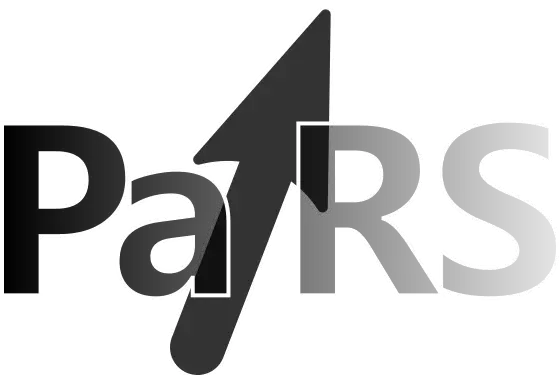
PaIRS-UniNa is a project developed by the Experimental Thermo Fluid-Dynamics (ETFD) group of University of Naples "Federico II" since 2000. It is aimed to provide fast and efficient tools for digital Particle Image Velocimetry (PIV) analysis in research and industrial applications.
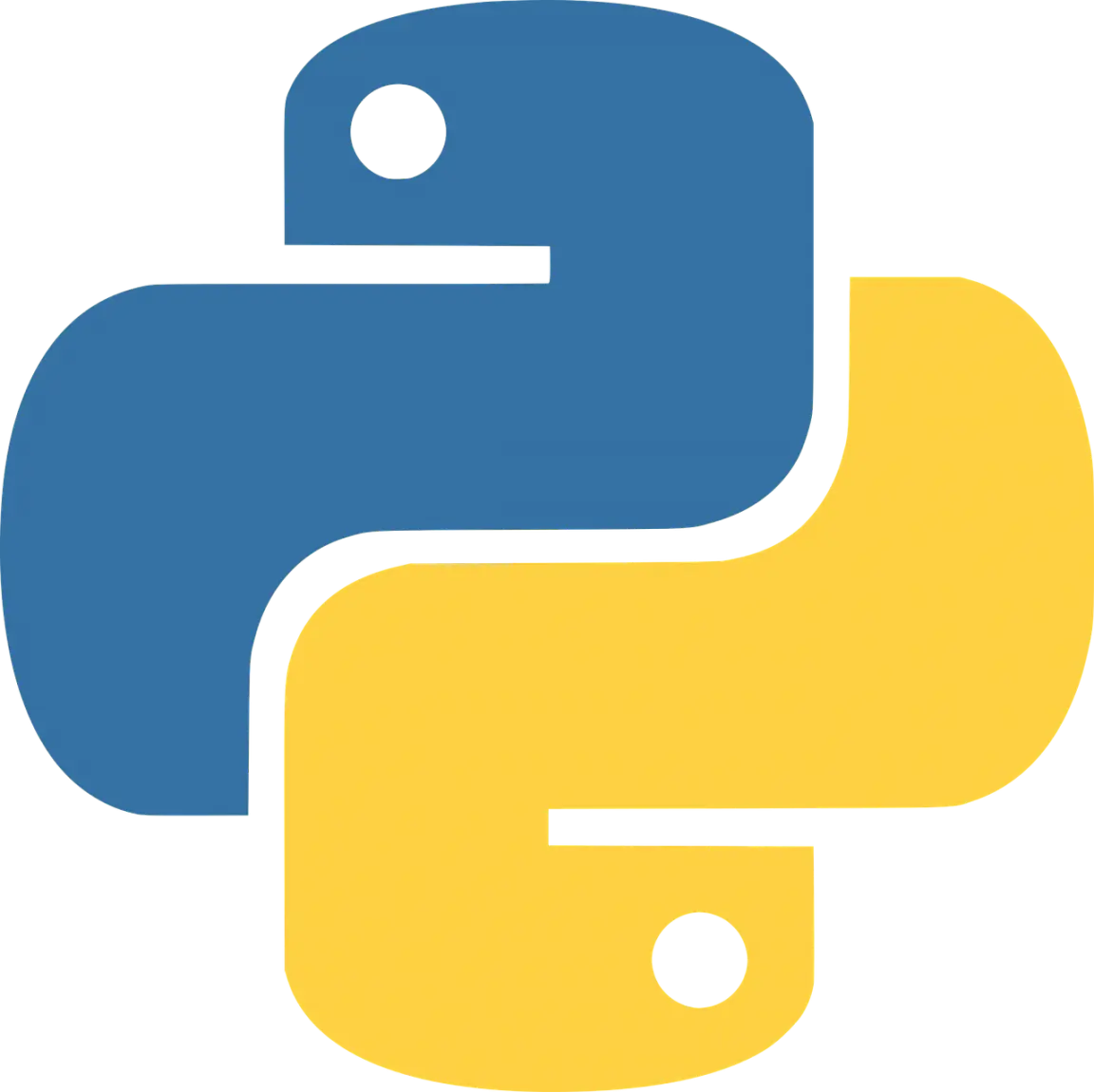
PaIRS-UniNa has a formidable brain, PaIRS-PIV, a C library designed for speed, robustness and accuracy, and a gorgeous body, PaIRS, consisting of a Python graphical user-interface developed via PySide6.
All it takes to win your heart...

PaIRS-PIV includes several modules that allow to process double-frame or time-resolved 2D planar PIV images as well as stereoscopic and tomographic PIV or Lagrangian particle tracking velocimetry (4D PTV) measurements.

PaIRS is extremely simple to use. You can choose among several preset strategies for image analysis, designed for different tasks like fast visualization of results or high accuracy. As well as you can customize the process to fit your needs.

PaIRS has been validated both numerically and experimentally and its accuracy and robustness have been proved during the 2nd and 3rd International PIV Challenges. It has been exploited in tens of experimental studies not only by the ETFD group, but also by other international groups.

You will be excited by the simplicity, power, speed and beauty of PaIRS!
And if not?!
Don't care...
PaIRS is free!
The graphical interface consists of an Explorer that allow you to organize your workflow by defining different types of processes grouped in projects and several tabs in which you can specify the settings for each process type. Very few steps will lead you to your desired results.

In the Explorer, you can create projects and edit them by defining processes to be executed sequentially at a later time. The explorer provides all the information on the execution status of the processes, including completion percentages and warning messages in case of issues. Easily navigate between completed processes and new ones, ready to be executed!
Read more in the user guide

In the current release of PaIRS, four types of processes can be executed:

Pre-process
pre-process analysis of a set of images aimed at computing historical minimum background.
PIV: particle image velocimetry analysis for computation of the two-dimensional two-component velocity field.
Each process consists of one or more steps, which can be either mandatory or optional. With the aid of the iconic PaIRS tabs, editing the parameters of these processes is a breeze!

In the Input tab you can select the set of images to process. This is generally done in few clicks, by browsing the disk and selecting the image folder. PaIRS supports over than 30 different file formats, namely those openable via the Pillow Python package.
Read more in the user guide
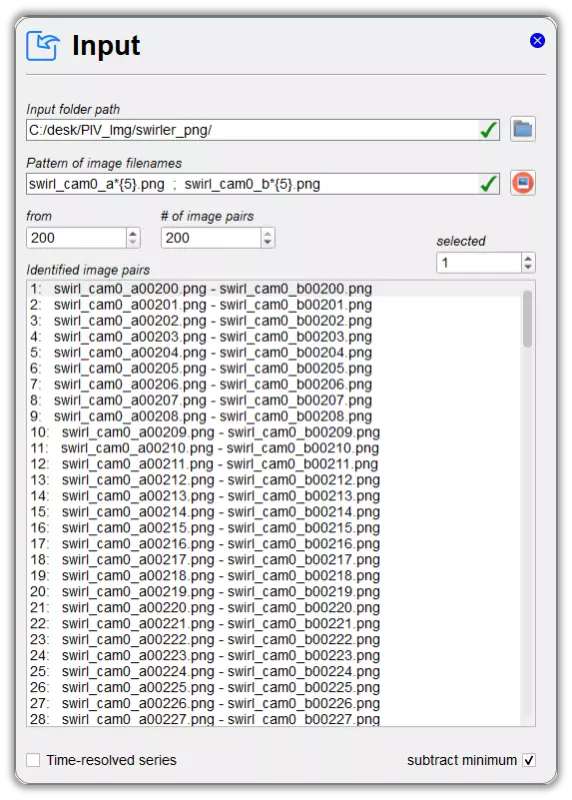

In the Output tab you can specify several types of transformations to be performed both on images upstream of the image analysis and on the computed velocity vectors or to select the region of the physical space where to perform the analysis. Furthermore, it is possible to set the image resolution and the time delay to convert the output from pixel-per-frame to meter-per-second units. And, of course, you can choose the location, the name and the type of the output files.
Read more in the user guide
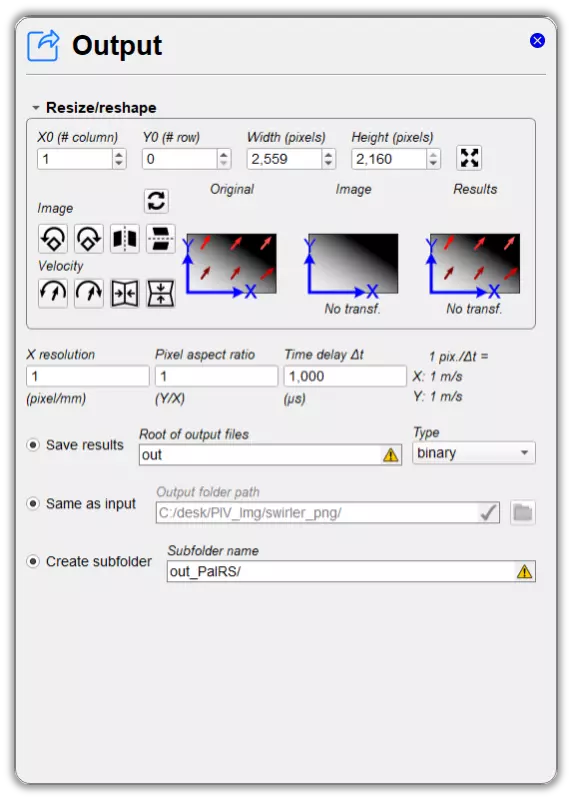

PaIRS employs an iterative multi-grid approach based on image deformation. Although several preset strategies are available, you will have full control of the processing method being allowed to change practically any relevant parameter of the same. The variety of parameters you can choose on your own include: the size, shape and number of interrogation windows; the number of iterations of the process; the type of interpolating functions for both image deformation and displacement interpolation (bilinear, bicubic, methods based on simplexes or on the FFT shift theorem, B-splines of different orders); the types of weighting windows for cross-correlation estimation and velocity field filtering (including rectangular, Blackman, Gaussian, Harris, Hann windows and many others); vector validation strategies for outlier detection and replacement. In such a way, you can tailor appropriately the modulation transfer function of the PIV process to your specific application.
Read more in the user guide
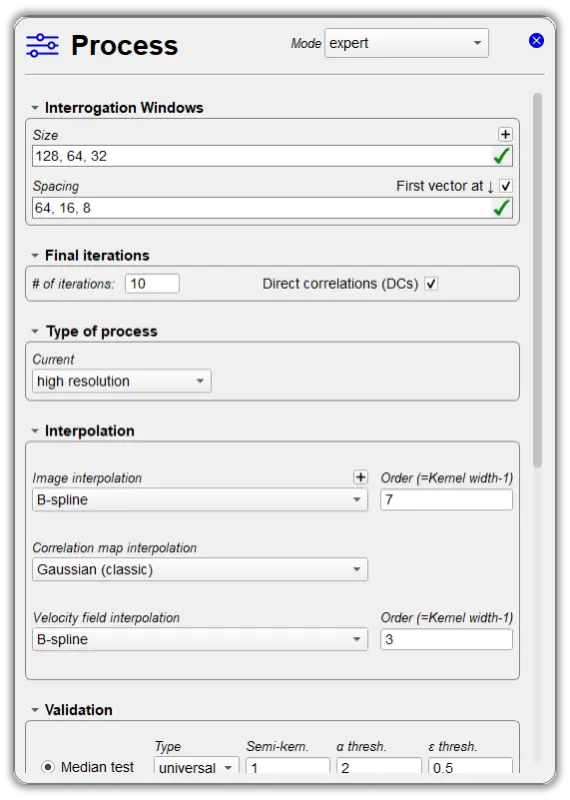

The Log tab displays useful information about the selected process. This comprises detailed information on the output from the PIV analysis, such as the percentage of correct vectors or the values of the coefficient of correlation, and the progress status, including the number of image pairs not processed yet and the estimated remaining time. Moreover, if something goes wrong, Log will tell you!
Read more in the user guide
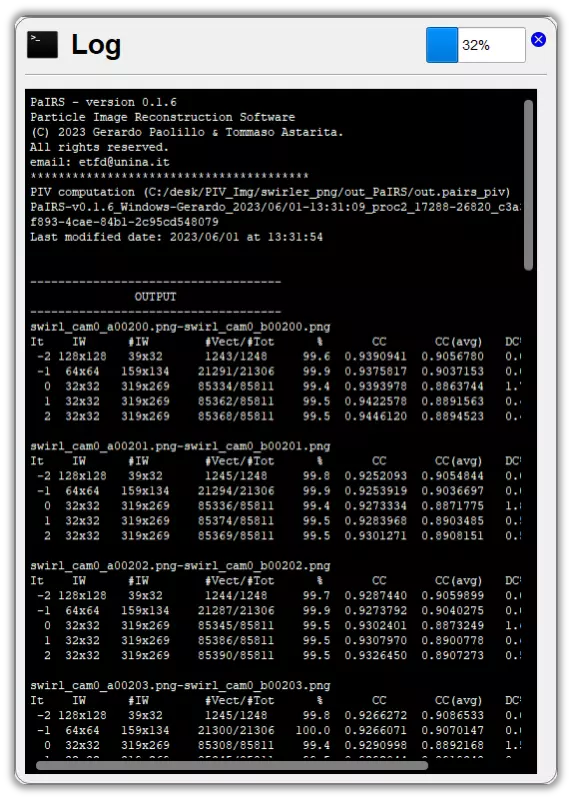

In Vis you can visualize both the input images and the results from your processes. These include not only the instantaneous velocity fields, but also some turbulent statistics (ensemble average and Reynolds stress components) and some statistics on the goodness of the process. A very fast way to your striking findings!
Read more in the user guide
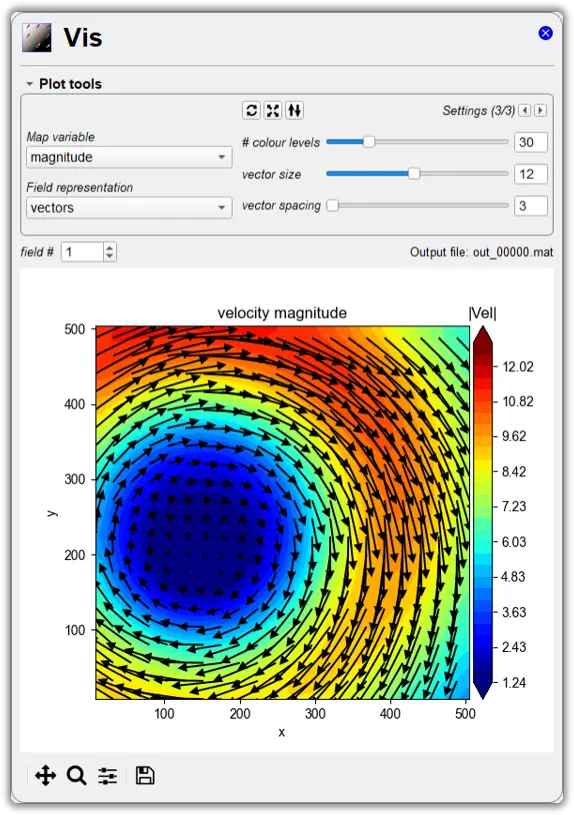
PaIRS-UniNa now includes also CalVi, a powerful module for accurate optical calibration of single and multiple camera bundles with the camera models mostly used in the PIV community: polynomials, rational functions and the pinhole camera model.
You will love its simplicity of use and the same charme of the PaIRS interface!
✨ New! Get the PaIRS executable for your operating system:
PaIRS-UniNa is supported by Python 3.10+ and is compatible with all the operating systems; however, the PaIRS-PIV library relies on the OpenMP library, which must be installed on the macOS platform. Moreover, PaIRS requires, among other packages, SciPy and matplotlib.
All PaIRS-UniNa wheels are distributed under LGPLv3+ licences at this link. For PaIRS installation, you must first download and install Python. Then, you can install the package via Pip with the following commands:
python -m pip install PaIRS-UniNa
Normally the OpenMP library is not preinstalled in macOs. A possible way to install this library is:
curl -O https://mac.r-project.org/openmp/openmp-12.0.1-darwin20-Release.tar.gz
sudo tar fvxz openmp-12.0.1-darwin20-Release.tar.gz -C /
After installation, you can run PaIRS directly from the command window with:
python -m PaIRS_UniNa
or launch it in Python with:
from PaIRS_UniNa import PaIRS
PaIRS.run()
Debug and clean-run modes are also available. For more details, read the PaIRS user-guide.
🎯 Do you want to try our software on real cases and don't have available data? Don't worry! Now you can download both PIV example data and calibration example data .


